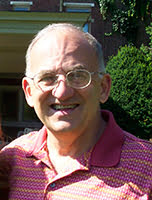About This Webinar
Fiber optic sensing technology has evolved over 60 years of development and commercialization. While many applications are for point sensors, the most rapid expansion has been for distributed fiber optic sensing systems, which will be the focus of the presentation.
Distributed fiber optic sensing systems fall into two categories: quasi-distributed (multipoint) systems and continuous systems. The technologies associated with these systems will be covered in detail, including Bragg grating and interferometric methods, as well as Raman, Brillouin and Rayleigh scattering. These sensing concepts can be used to measure strain, temperature, vibration, pressure, acoustic emission, electric and magnetic fields, chemical detection and other parameters. The availability of this sensor capability has been used in a range of applications including oil and gas exploration and extraction, industrial monitoring, homeland security and military surveillance, and smart structures.
A very important point that is understated is that fiber optic sensing systems have enabled smart oil and gas wells that are allowing North America to gain energy independence. The technology has not yet reached maturity and will likely expand and create many new applications and commercialization opportunities. A brief overview of the market will be presented.

Presenter
David Krohn is the managing partner of Light Wave Venture LLC. He is the chairman of the Photonic (Fiber Optic) Sensor Consortium, which has more than 60 participating companies and organizations. He is a co-author of the book
Fiber Optic Sensors: Fundamentals and Applications (fourth edition, 2014).
Krohn has a bachelor's degree from Rutgers University, a master's degree from Case Western Reserve University and a doctorate from Lehigh University, all in materials science.
Additional questions and answers
Q: Predominantly which wavelength is used in sensing devices and what kind of lasers are used?
A: 930, 1064, 1310 and 1550 nm; laser diodes, swept lasers, fiber lasers
Q: Why does a transducer have to add in reference arm of an interferometers?
A: The transducer is designed to keep the sensor functioning at the inflection points in the intensity versus phase shift curve, which are the points of highest sensitivity.
Q: What are the present critical limits in fiber optic sensors?
A: Temperature: <300 °C; distance: loss of resolution beyond 10 km; high hydrogen environments are problematic unless special hydrogen-resistant fiber is used; low-cost applications have been a problem
Q: What is the sensitivity difference between electromagnetic and biophotonic sensors?
A: Both can measure the desired parameter accurately, either current or voltage or chemical target concentration. In some cases, the biophotonic sensor is just used as an alarm. Is the target analyte present?
Q: Among electromagnetic and biophotonic sensors, which one is efficient and in which areas are they being used?
A: The electromagnetic sensors are available commercially for the power utility industry and military applications. Biophotonic sensors have been used in drug discovery. Chemical sensors are available for methane.
Q: What are the best fiber-based spectrometers in infrared?
A: Near-infrared spectroscopy using fiber: Ocean Optics; mid-infrared spectroscopy requires special fibers (fluoride or chalcogenide): Thorlabs
Q: Is there an issue with mode coupling?
A: Mode coupling can be a source of noise or it can be used as the sensing function especially used in various biophotonic sensing schemes.
Q: Are you aware of any fiber optic 3D shape-sensing systems?
A: Yes, there have been several government contracts related to shape sensing: Aither (Weatherford) has developed shape-sensing systems.
Q: In evanescent wave fluorescence sensing, isn't it true that single-mode fiber has to support the propagation of the back-propagated fluorescent signal?
A: One of the applications shown in the webinar, illustrated the back transmission of a fluorescent signal through a fiber. Such signals can be transmitted on single or multimode fiber.